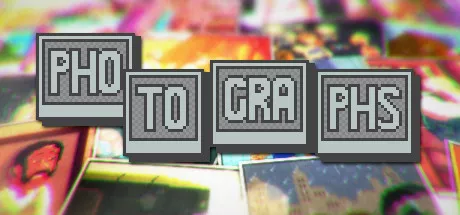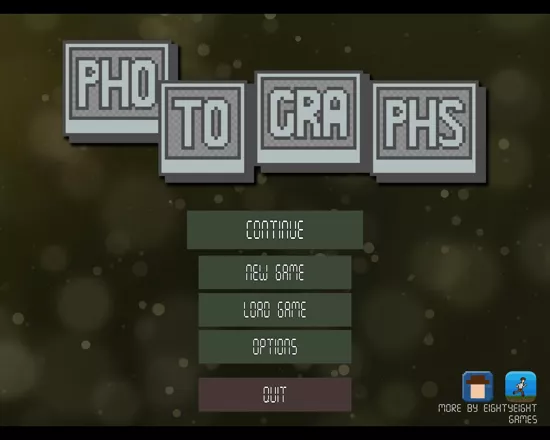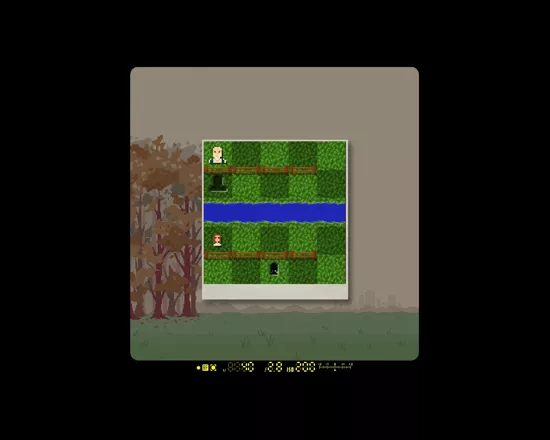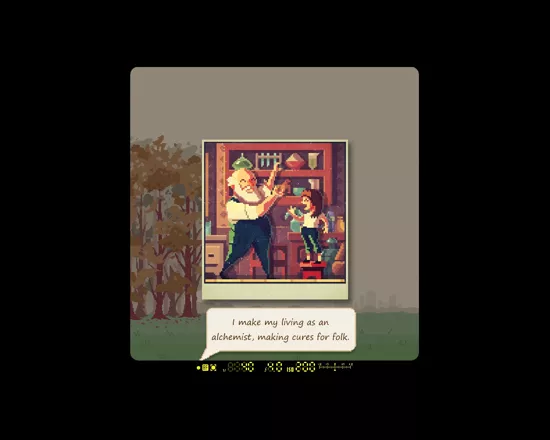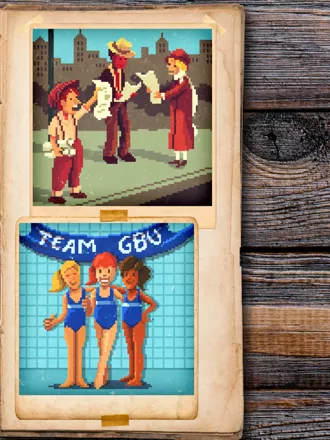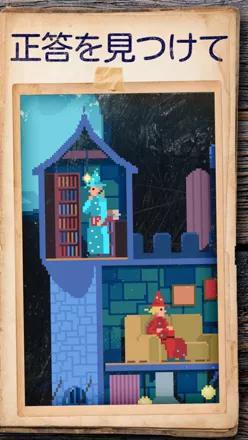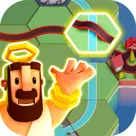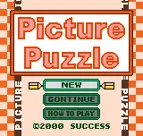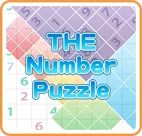Photographs
Description official descriptions
Photographs is a narrative game with puzzles serving to advance the plot, rather than an adventure game in a classic sense of the genre. The game is split into five chapters, each of them set in its own time frame and location, and having a separate story. The similarity is that they all have the same setup: show the player a very simple puzzle which would explain the mechanics of this particular story, followed up by narration, which is followed up by another puzzle, and so on. To unlock the next puzzle, the player needs to find the desired picture element on the diorama using a camera interface and let the game to "take a photo" of that thing. As the story unfolds before the player's eyes, the puzzles are getting more and more difficult and time-consuming, while the dioramas get more and more detailed. Eventually, a point will be reached in the story that plainly sunders that protagonist's life in before and after parts, and their choice and its outcome are shown.
The difference between the chapters is that what worked for one story, is utterly useless in another. There're five kinds of puzzles in the game in total - lead characters to a specific spot, make the ball reach the target, fill the playing field with shapes, connect starting point and finish point and match-three kinds of puzzles. All of them are with little quirks and twists making them stand out as unique in the crowd of similar ones. There's a hint system implemented as of the last update, and there's a director's commentary mode available, so you won't be stuck forever if you've no idea how to solve a puzzle. The ending of the game depends purely on your own choice and moral compass. Finally, the game is quite short and takes about four hours at maximum to complete.
Spellings
- Photographs — Загадочные истории - Android Russian spelling
- フォトグラフ·パズル·ストーリー - App Store product page Japanese spelling
- 포토그래프 - 퍼즐 스토리 - App Store product page Korean spelling
Groups +
Screenshots
Promos
Videos
Add Trailer or Gameplay Video +1 point
See any errors or missing info for this game?
You can submit a correction, contribute trivia, add to a game group, add a related site or alternate title.
Credits (Windows version)
25 People (23 developers, 2 thanks) · View all
| -- |
|
| Design by | |
| Art | |
| Music | |
| Written by | |
| Testing | |
| Localisation | |
| Voice | |
| End Theme |
|
| [ full credits ] | |
Reviews
Critics
Average score: 86% (based on 8 ratings)
Players
Average score: 4.0 out of 5 (based on 10 ratings with 2 reviews)
A very strong narrative concealed for a puzzle solving game.
The Good
Okay, let's get going with the first thing that comes on my mind - this is not an adventure game as the game's rap sheet states. Well, not an adventure game in the sense that one would expect from it, with moving from location to location, gathering an inventory of items, solving obscure puzzles to advance the plot. No, it's a narrative instead, but I can't recall seeing one so small and so strong at the same time. Advert does not lie a jot - Photographs is indeed a very short game, roughly around these promised three hours. Its length will depend solely on how well you will be with solving its puzzles, so it might be a bit less, or a bit over three hours instead. Now let's discuss how everything is presented and in this section we'll stop over the good things, of course.
As it gets usual with my reviews, I'll start with the visuals, because it's the first thing that is thrown at you as a player. Let's make something clear here - I am well aware that 2019 is about to end. I am well aware that graphics in the game is now sometimes near photo realistic. And I am also able to remember quite clear how glad I was to see that art evolve from a bunch of pixels to the modern state of things. Photographs is a hark back to that former epoch being drawn up fully in pixel art. Yet it is done most beautiful. I'll reiterate - I grew up on the games like these, so I am not the one to cringe and close the game when I can't see veins in the tree leaves, I just happen to like the modern graphics more, and I believe that it's just natural. But the way these arts in the game were drawn, they were not just making me recall those old games, they were very likeable, very good.
So, everything from the main menu to the end credits is done up in great pixel art. And how does the story unfold? Well, there are five different narratives tied together only with the fact that they are all happening within the same world, even if the latter is a bit obscure thing to notice. When you play the game for the very first time, these five stories are presented to you in a specific order. The first one is the Alchemist, the second one is the Athlete, the third one is the story of the Jailer, the fourth one is the Journalist and the final set of puzzles tells the story of the Preventer. So when you click on the new game button, the alchemist's story starts. It opens up with a very simple puzzle to solve, in our case - to lead the alchemist and his ward, Cleo, to the specific point on the playing field. That serves the purpose of introducing the player to the puzzle set that would accompany current narrative. Then after you're done with it, a big still picture styled like a Polaroid photograph appears with some text and voice over, starting to introduce the player into the story proper. You get rid of it and a beautiful big diorama is presented to you with the first things starting to fill it up with details. Then it's the time for the only thing that connects the title of the game with its gameplay to come in. You're prompted with a name of something or somebody, and you're to find it on the diorama, zoom in and wait until a photo is taken, and then next puzzle unlocks so you could solve it and advance the story in the similar fashion. Sooner or later something happens that serves as the watershed, an interface between what was before and what is now. Character's life is no longer going to be the same it was, and they tell us about their deepest regret, something they wish they had never done. The story ends either here or soon after showing the consequences of their actions, and the next one unlocks.
And literally every little bit of that all is served using that pixel art mentioned up above, the kind of art that looks simple as Hell, but takes ages to actually create. The artists did their job more than properly. They've managed to make these pixels to convey things from simple emotion display on the characters to complex effects that set the vibe for the whole scene. Every effect happening while you're doing a puzzle has been also lovingly fine-tuned to a sort of perfect fit. This has to be seen at least once, no amount of words will do their work proper justice.
While we're still at the presenting things page, let's also touch on the audio. I sincerely can't say a single bad word about it. The musical themes, written by Ben Prunty, were very nice, pleasing and fitting every scene. He had composed a different song for every story, and I dare to say that no single time the music got annoying. I do not know who is responsible for the sound effects, but they were also well-done. Again, not annoying, fitting and sometimes even charming. End credits song by Hartley, whoever that is, because Google could not help me here, is a cute one too. All in all, audio part of the game is very solid as well.
Among the other things that I liked is variety of the game. Normally you'd expect from a puzzle game a bunch of levels, a big one, which get more and more difficult as you progress. Here we have none of the case. Puzzles do get more difficult within every story, but every narrative has its own problem to solve. Alchemist one has the goal of leading him and Cleo to the specific spots like I've said. Trouble is, they move together, and the field slowly gets filled up with gates, mud piles, deadly bushes, wild growth and so on. In the second story about a diver, the puzzles are about physics. Your goal is to make the ball hit the portrait of a girl that is performing a jump, and then land into the water. Simple at first, but then more bouncing pads, angular platforms, viscous fields appear. Third set of puzzles in the jailer's story is about the simplest - make the figures fit the shape up on the playing field, eventually having to rotate them. Fourth set represents the journalist writing his papers from the header to the conclusion, and you need to connect the starting and the finishing point, wrapping around obstacles on your way. Some of them get aggressive later one, actively preventing you from doing that. Final set in the preventer is a classic match three or more kind of puzzle, but with a few quirks like combining items to make another one appear (for example, water and flame makes steam), or teleporting spots. All of this does not let the game to turn stale, or some mechanics to get old. What you've used in one set of puzzles, won't work in another.
Maybe the biggest thing I did like was the lack of black and white division in the game's narrations. Life is gray, so even the best probable outcome would suck one way or another more likely than not. The game has literally no happy ending for anyone, and how it ends depends only on you. Only the player can decide which one of the five endings will be displayed. Finally, I'd like to note that the user interface is well thought out, it's intuitive and easy to use. There's also a dynamic hint mode that can be switched on and off, allowing you to either help you with a puzzle or completely skip one, and the director's commentary, giving interesting insights.
The Bad
There's not much to say about what is bad in the game. Perhaps, it'd have been better if it was not as obscure that every story is happening within the same world, because right now it is clearly visible only if you choose the ending concerning the journalist. Two or three puzzles out of the whole game were way too difficult compared to the rest of the set, and it'd be nice to balance it, tone it down a little. There are also a few bugs here and there, but they're not critical or able to ruin the gameplay. The worst, probably, is the controls part. I can't complain that the control scheme is completely alien, but it's clearly was first written for the mobile platform. You can control the game only with your mouse, and I think the only key on the keyboard it understands is the escape one. Everything else is done in taps (cursor clicks) and swipes (click, hold and drag). And sometimes there's just not enough free space on my table to move the mouse all the way I need to. Oh, and the last bad thing is that the game title has the only connection with the gameplay when you hunt for the objects on the dioramas to unlock the next puzzle, and even if you zoom in, the data in the bottom has absolutely nothing to do with the actual photography and is pure static. Other than that, I can't recall anything to complain about.
The Bottom Line
All-in-all, I did enjoy this game. It's a rare thing to see a good narrative that raises uncomfortable questions like is killing someone to save the one you deeply love justified, or does everyone cheat in sports for the personal gain? It's also a rare thing to see a narrative that does not end in a happy end one way or another. It's not an adventure, but it's not just a puzzle either. Pick this game up if you're looking for a strong story to make you think about something for a change instead of a cerebral chewing gum. And truly, in our rushing world, three hours is a great length for such a game. As a fun fact on the side - in Russian Steam it actually costs less than in Google Play, marginally, but still. A mobile version is more dear than desktop version. When did you see something like that for the last time?
Windows · by Vereina (785) · 2019
A very strong narrative concealed for a puzzle solving game.
The Good
Okay, let's get going with the first thing that comes on my mind - this is not an adventure game as the game's rap sheet states. Well, not an adventure game in the sense that one would expect from it, with moving from location to location, gathering an inventory of items, solving obscure puzzles to advance the plot. No, it's a narrative instead, but I can't recall seeing one so small and so strong at the same time. Advert does not lie a jot - Photographs is indeed a very short game, roughly around these promised three hours. Its length will depend solely on how well you will be with solving its puzzles, so it might be a bit less, or a bit over three hours instead. Now let's discuss how everything is presented and in this section we'll stop over the good things, of course.
As it gets usual with my reviews, I'll start with the visuals, because it's the first thing that is thrown at you as a player. Let's make something clear here - I am well aware that 2019 is about to end. I am well aware that graphics in the game is now sometimes near photo realistic. And I am also able to remember quite clear how glad I was to see that art evolve from a bunch of pixels to the modern state of things. Photographs is a hark back to that former epoch being drawn up fully in pixel art. Yet it is done most beautiful. I'll reiterate - I grew up on the games like these, so I am not the one to cringe and close the game when I can't see veins in the tree leaves, I just happen to like the modern graphics more, and I believe that it's just natural. But the way these arts in the game were drawn, they were not just making me recall those old games, they were very likeable, very good.
So, everything from the main menu to the end credits is done up in great pixel art. And how does the story unfold? Well, there are five different narratives tied together only with the fact that they are all happening within the same world, even if the latter is a bit obscure thing to notice. When you play the game for the very first time, these five stories are presented to you in a specific order. The first one is the Alchemist, the second one is the Athlete, the third one is the story of the Jailer, the fourth one is the Journalist and the final set of puzzles tells the story of the Preventer. So when you load the game, the alchemist's story starts. It opens up with a very simple puzzle to solve, in our case - to lead the alchemist and his ward, Cleo, to the specific point on the playing field. That serves the purpose of introducing the player to the puzzle set that would accompany current narrative. Then after you're done with it, a big still picture styled like a Polaroid photograph appears with some text and voice over, starting to introduce the player into the story proper. You get rid of it and a beautiful big diorama is presented to you with the first things starting to fill it up with details. Then it's the time for the only thing that connects the title of the game with its gameplay to come in. You're prompted with a name of something or somebody, and you're to find it on the diorama, zoom in and wait until a photo is taken, and then next puzzle unlocks so you could solve it and advance the story in the similar fashion. Sooner or later something happens that serves as the watershed, an interface between what was before and what is now. Character's life is no longer going to be the same it was, and they tell us about their deepest regret, something they wish they had never done. The story ends either here or soon after showing the consequences of their actions, and the next one unlocks.
And literally every little bit of that all is served using that pixel art mentioned up above, the kind of art that looks simple as Hell, but takes ages to actually create. The artists did their job more than properly. They've managed to make these pixels to convey things from simple emotion display on the characters to complex effects that set the vibe for the whole scene. Every effect happening while you're doing a puzzle has been also lovingly fine-tuned to a sort of perfect fit. This has to be seen at least once, no amount of words will do their work proper justice.
While we're still at the presenting things page, let's also touch on the audio. I sincerely can't say a single bad word about it. The musical themes, written by Ben Prunty, were very nice, pleasing and fitting every scene. He had composed a different song for every story, and I dare to say that no single time the music got annoying. I do not know who is responsible for the sound effects, but they were also well-done. Again, not annoying, fitting and sometimes even charming. End credits song by Hartley, whoever that is, because Google could not help me here, is a cute one too. All in all, audio part of the game is very solid as well.
Among the other things that I liked is variety of the game. Normally you'd expect from a puzzle game a bunch of levels, a big one, which get more and more difficult as you progress. Here we have none of the case. Puzzles do get more difficult within every story, but every narrative has its own problem to solve. Alchemist one has the goal of leading him and Cleo to the specific spots like I've said. Trouble is, they move together, and the field slowly gets filled up with gates, mud piles, deadly bushes, wild growth and so on. In the second story about a diver, the puzzles are about physics. Your goal is to make the ball hit the portrait of a girl that is performing a jump, and then land into the water. Simple at first, but then more bouncing pads, angular platforms, viscous fields appear. Third set of puzzles in the jailer's story is about the simplest - make the figures fit the shape up on the playing field, eventually having to rotate them. Fourth set represents the journalist writing his papers from the header to the conclusion, and you need to connect the starting and the finishing point, wrapping around obstacles on your way. Some of them get aggressive later one, actively preventing you from doing that. Final set in the preventer is a classic match three or more kind of puzzle, but with a few quirks like combining items to make another one appear (for example, water and flame makes steam), or teleporting spots. All of this does not let the game to turn stale, or some mechanics to get old. What you've used in one set of puzzles, won't work in another.
Maybe the biggest thing I did like was the lack of black and white division in the game's narrations. Life is gray, so even the best probable outcome would suck one way or another more likely than not. The game has literally no happy ending for anyone, and how it ends depends only on you. Only the player can decide which one of the five endings will be displayed. Finally, I'd like to note that the user interface is well thought out, it's intuitive and easy to use. There's also a dynamic hint mode that can be switched on and off, allowing you to either help you with a puzzle or completely skip one, and the director's commentary, giving interesting insights.
The Bad
There's not much to say about what is bad in the game. Perhaps, it'd have been better if it was not as obscure that every story is happening within the same world, because right now it is clearly visible only if you choose the ending concerning the journalist. Two or three puzzles out of the whole game were way too difficult compared to the rest of the set, and it'd be nice to balance it, tone it down a little. There are also a few bugs here and there, but they're not critical or able to ruin the gameplay. Oh, and the last bad thing is that the game title has the only connection with the gameplay when you hunt for the objects on the dioramas to unlock the next puzzle. Other than that, I can't recall anything to complain about.
The Bottom Line
All-in-all, I did enjoy this game. It's a rare thing to see a good narrative that raises uncomfortable questions like is killing someone to save the one you deeply love justified, or does everyone cheat in sports for the personal gain? It's also a rare thing to see a narrative that does not end in a happy end one way or another. It's not an adventure, but it's not just a puzzle either. Pick this game up if you're looking for a strong story to make you think about something for a change instead of a cerebral chewing gum. And truly, in our rushing world, three hours is a great length for such a game. As a fun fact on the side - in Russian Steam it actually costs less than in Google Play, marginally, but still. A mobile version is more dear than desktop version. When did you see something like that for the last time?
Android · by Vereina (785) · 2019
Analytics
Upgrade to MobyPro to view research rankings!
Identifiers +
Contribute
Are you familiar with this game? Help document and preserve this entry in video game history! If your contribution is approved, you will earn points and be credited as a contributor.
Contributors to this Entry
Game added by Sciere.
Android added by Vereina.
Additional contributors: Rik Hideto, Vereina.
Game added April 8, 2019. Last modified February 13, 2023.
